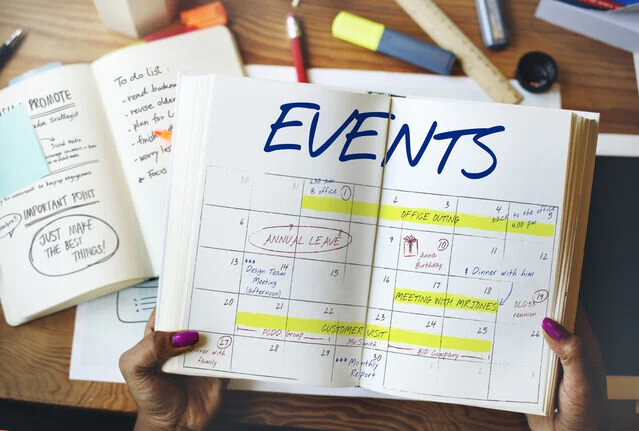4 Reasons Writing Things Down on Paper Still Reigns Supreme
A recent side-by-side comparison of analog paper notebooks vs. mobile digital devices used fMRI neuroimaging to identify specific brain activation differences during memory retrieval.
Analog notebook use activates multiple brain regions associated with optimal memory-encoding (and subsequent retrieval) more robustly than using digital devices, the researchers found.
Handwriting a detailed personal schedule can be faster and more accurate than using a tablet or smartphone for the same information.
Bringing a digital document to life with different colors, shapes, arrows, highlights, and other personal flairs may mimic some of the memory-encoding benefits of handwritten notebooks.
Handwriting your weekly schedule in a Filofax-like appointment book may seem archaic. But new research suggests that analog personal schedules—written by hand in a paper notebook using pens, pencils, markers, and different colored highlighters—can outshine using a digital device for the same information in at least four different ways.
This "paper notebooks vs. mobile devices" study (Umejima et al., 2021) led by a team of researchers at the University of Tokyo was published on March 19 in the peer-reviewed journal Frontiers in Behavioral Neuroscience.
For this multi-pronged study, senior author Kuniyoshi Sakai, a neuroscientist at the University of Tokyo, and his Sakai Lab members investigated how writing down scheduled appointments in a paper notebook compared to inputting the information digitally into a mobile electronic tablet or smartphone.
This study's cohort consisted of 48 Japanese university students and recent graduates (aged 18-29 years). Study participants were randomly divided into an analog "Note" group that used paper notebooks for a semester's worth of daily schedule management, a digital "Tablet" group, and a digital "Phone" group. Both mobile "Device" groups typed their daily schedules into a generic digital device template.
"Participants who used a paper datebook filled in the calendar within about 11 minutes. Tablet users took 14 minutes and smartphone users took about 16 minutes," the authors explain. "The duration of writing down schedules was significantly shorter for the Note group than the Tablet and Phone groups, and accuracy was much higher for the Note group."
One hour after filling out a relatively complicated personal schedule that included lots of different class times and due dates for assignments, the volunteers were asked to answer some detailed questions related to their personal calendar while inside a functional MRI (fMRI). This neuroimaging scanner measures increased neuronal activity in specific brain areas based on increased blood flow to a particular cortical or subcortical region.
Four Ways Handwritten Notes on Paper Top Digital Note-Taking
Jotting things down on paper is faster.
Handwritten notes tend to be more accurate and have personalized flairs.
Handwriting in a notebook triggers more robust brain activity.
Writing by hand is associated with stronger neural encoding and memory retrieval.
In addition to being faster and more accurate, the fMRI neuroimaging data from this "paper notebooks vs. mobile devices" study suggest that the act of physically writing things down on paper is associated with more robust brain activation in multiple areas and better memory recall.
For example, during the memory retrieval phase, study participants in every group showed some degree of increased brain activity in language-related frontal regions, the visual cortices, the precuneus, and bilaterally in the hippocampus. However, the researchers found that "activations in these regions were significantly higher for the Note group than those for the Tablet and Phone groups."
#1 Tip: Use Paper Notebooks for Information You Need to Learn or Memorize
Based on these findings, the authors speculate that "the complex, spatial and tactile information associated with writing by hand on physical paper is likely what leads to improved memory."
"Digital tools have uniform scrolling up and down and standardized arrangement of text and picture size, like on a webpage. But if you remember a physical textbook printed on paper, you can close your eyes and visualize the photo one-third of the way down on the left-side page, as well as the notes you added in the bottom margin," Sakai said in a news release. "[Handwriting on] paper is more advanced and useful compared to electronic documents because paper contains more one-of-a-kind information for stronger memory recall."
"Our take-home message is to use paper notebooks for information we need to learn or memorize," he added.
If keeping a digital calendar is more efficient in terms of sharing your schedule/availability with colleagues or coworkers, the researchers suggest that adding some unique shapes and colorful flairs to a digital document might mimic some of the "analog" benefits of jotting things down by hand.
The researchers' closing advice: "Personalizing digital documents by highlighting, underlining, circling, drawing arrows, handwriting color-coded notes in the margins, adding virtual sticky notes or other types of unique mark-ups can mimic analog-style spatial enrichment that may enhance memory."

